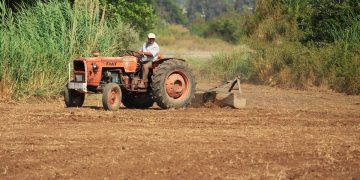Main findings of the June global overview:
- At the end of the main cereal season in southern Africa, preliminary estimates from the Climate Hazards Center at the University of California, Santa Barbara, and NASA’s Famine Early Warning Systems Network indicate that the regional 2024 summer cereal harvest will be around 28.2 million tons, 14 % lower than the 5-year average and 24 % lower than the 2023 harvest (Southern Africa Regional Supply and Market Outlook Update). Winter wheat planting is ongoing in the Cape area of South Africa, and a rainfall deficit is affecting the area, with no impact yet on vegetation conditions.
- In East Africa, exceptionally high temperatures and low rainfall affected parts of South Sudan and north-west Ethiopia in May and June, whereas most other areas experienced above-average rainfall. Good livestock and crop conditions are observed in Ethiopia, Kenya, Somalia and Uganda. For Somalia, the Joint Research Centre’s pre-operational country-level yield-forecasting model based on Machine Learning for sorghum is 30 % above the 5-year average. In South Sudan, drought conditions have worsened since the beginning of the season and are also extending into the southern parts of neighbouring Sudan. According to a recently published report by the IPC, food security conditions in Sudan have rapidly deteriorated, leaving 25.6 million people at high levels of acute food insecurity and 14 areas at risk of famine.
- In North Africa, record low yields are forecast for Morocco according to the Joint Research Centre’s pre-operational country-level yield-forecasting model based on Machine Learning, with wheat and barley yields expected to be 42 % and 46 % below their respective 5-year averages. Central and eastern Algeria and Tunisia have experienced better rainfall conditions since December 2023, leading to close-to-average crop yield expectations.
- In West and central Africa, first-season maize crop conditions are generally favourable in the southern bimodal parts of the region. A delayed start to the season and below-average crop conditions are observed in southern and central Burkina Faso, northern Cameroon, southern Chad, western Guinea, south-western Mali and central and northern Nigeria. The Copernicus Climate Change Service multimodel seasonal rainfall forecast for July–August 2024 indicates average to above-average rainfall in most parts of the region, except for central Cameroon, northern Guinea, southern Mauritania and western Senegal, where drier-than-average conditions are expected.
- In the Middle East, the harvest of winter cereals finished with good prospects in Iraq and Syria, except in the south of Iraq. Similarly, in Iran the harvest of winter cereals is under way with good prospects, except in small areas of the south (Bushehr and Fars), east (Khorasan) and centre north (Qazvin). In Yemen, favourable conditions for sorghum are observed in the coastal areas and the central highlands and for wheat sowing in the central highlands and southern uplands.
- In central Asia, the harvest of winter cereals started in June, and prospects are average in Turkmenistan and above average in all other countries of the region. Conditions are also favourable for the early growth of spring wheat and barley in Kazakhstan and Kyrgyzstan. In Afghanistan, the harvest of winter cereals finished with average or above-average prospects except in the north-west. In South Asia, planting of kharif crops (rice, maize, millet) is under way in Pakistan, while conditions for aman rice in Bangladesh are good except in the northeast (Dakha and Sylhet) were two million hectares have been flooded since early June. In Sri Lanka, conditions for second-season yala rice and maize are average or above average.
- South-East Asia is no longer monitored by ASAP analysts. In East Asia, the ASAP team continues to monitor only North Korea, where the biomass of rice and maize is above average. If specifically requested, an ad hoc analysis can be conducted (please contact us by email).
- In Latin America and the Caribbean islands, a poor harvest of sorghum is expected in Bolivia, as the main grain-producing department, Santa Cruz, was affected by rainfall deficits throughout the agricultural season. In Colombia, Cuba, Ecuador, Haiti and Peru, the harvest prospects of crop cycles are favourable, and normal progress of crops in sowing and vegetation stages can be expected. Delays in the establishment of the primera cycles are observed in Guatemala and Honduras, as rainfall deficits affected large cropping areas; however, rainfall is forecast to be above normal for the period between June and August and might bring some improvement for crops in these areas (Copernicus Climate Change Service multimodel).
The next assessment is scheduled for the end of July 2024.
O artigo foi publicado originalmente em JRC.






















































